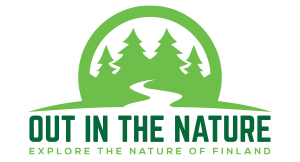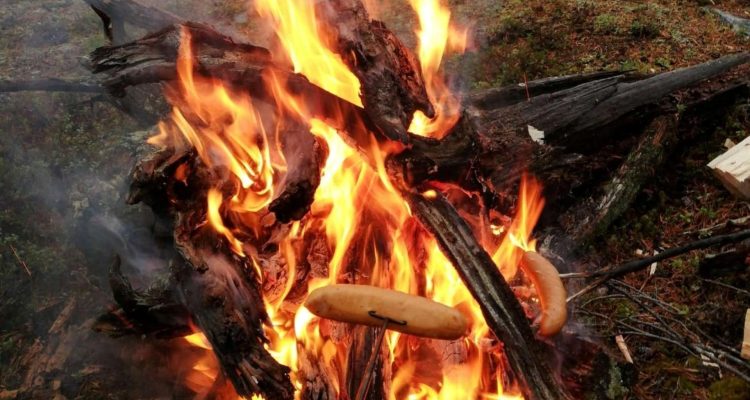Do you know what forest fire warning in Finland means? As the sun sets and the cool evening breeze wraps around you after a day of hiking, there’s something undeniably enchanting about the idea of gathering around a crackling campfire in the heart of nature. I absolutely love sitting by the campfire. But with this magical experience comes great responsibility. Fire safety in nature is not only crucial for your own well-being but also for the preservation of our pristine wilderness. In this article, we’ll explore the best practices for making a fire, types of fireplaces you may encounter in Finland, the importance of checking forest fire warnings, and what to do in case of a fire outdoors.
Why fire safety matters out in the nature
According to Rescue Services statistics, last year there were a total of 2,265 forest fires, while the annual average for the past ten years has been around 2,600. This year there has been over a thousand forest fires by end of June. Over 60 percent of the forest fires recorded this year so far have been initiated due to human actions. These incidents often stem from sources such as campfires, the burning of twigs and waste, or discarded cigarette butts. Approximately 15 percent of forest fires were triggered by lightning or other natural events, while the cause of ignition remains unidentified for a similar percentage of cases.
The consequences of forest fires are diverse. They accelerate climate change when tons of carbon dioxide are released into the atmosphere, and on the other hand climate change affects the increase in forest fire risk. It is estimated that the forest fire risk increases to some extend in Southern Finland in the near future. There are species that benefit from forest fires or are completely dependent on them and the charred wood it brings. While forest fires are a natural part of ecosystem, they also threaten biodiversity by destroying valuable habitats and causing immediate danger to animals.
Forest fires are actively fought so that they cause as few economic losses as possible. In Finland, forest fires usually remain small due to quick reaction to fires and efficient prevention such as forest fire control and a functioning network of forest roads.
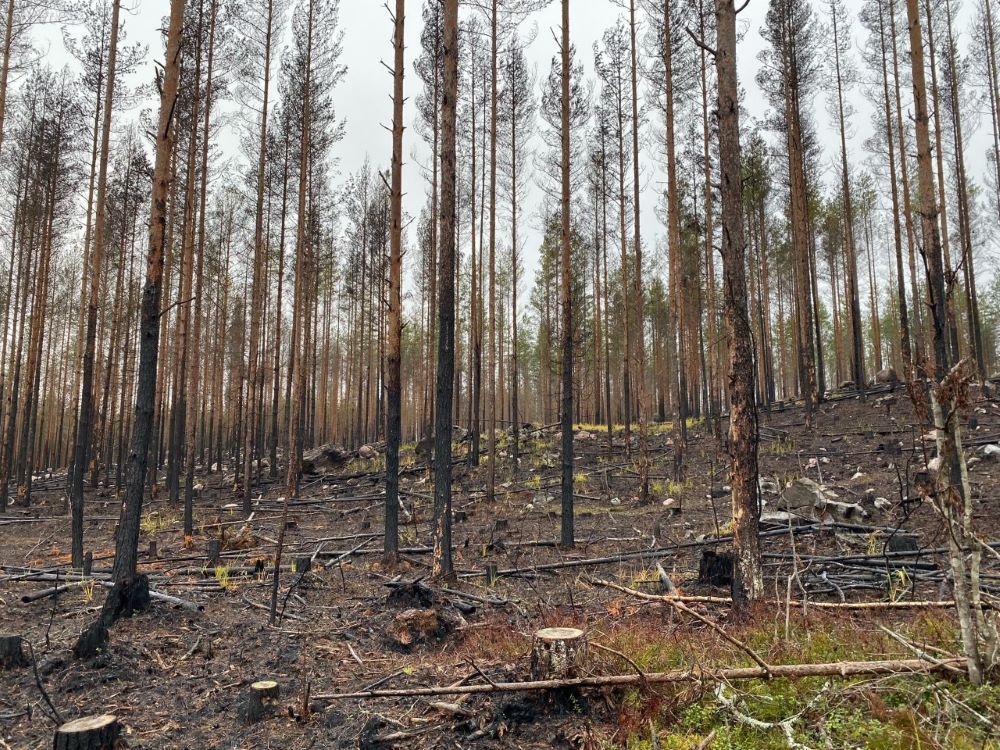
Some large forest fires in Finland in recent history
- A forest fire broke out in Kalajoki on July 26, 2021 at the wind farm site during the hottest time of summer. In the end, a total of 227 hectares of forest burned. Forest fires are not rare in Finland, but they rarely get even this big. Firefighters gathered from all around the country to Kalajoki to fight the fire. The fire spread to Susineva marsh, making it larger and more difficult to manage. Extinguishing the forest fire went fairly well because the forest fire was contained relatively quickly.
- The memory of a forest fire from around two decades ago in Tammela remains vivid in my mind. Not that I experienced it closely, I only followed the news coverage at the time. There were kids’ camp, horse stables, and firefighters in danger when approximately 240 hectares of land adjacent to Liesjärvi National Park were engulfed by flames in1997. This fire spread across the main road 2, encroaching upon the nearby Torronsuo National Park. Firefighters narrowly escaped the advancing flames by cutting their hoses with axes and reversing their trucks at full speed out of the forest. Had the wind shifted direction, the fire’s impact could have been exponentially greater, affecting an area ten times larger. The reason for Tammela’s forest fire is unknown, but a warehouse full of machinery was located right at the center of the fire area.
- Tuntsa forest fire was one the largest forest fire in Finland’s written history. It raged from the end of June 1960 in the Tuntsa wilderness in the northern parts of the municipality of Salla and even more widely on the side of the Soviet Union. The fire was probably started by a lightning strike, and its spread was facilitated by the hot summer. On the Finnish side, the fire destroyed about 20,000 hectares, while on the Soviet side the fire area was about 100,000 hectares wide.
To prevent such extensive fires, adhering to fire safety and forest fire warnings is important. These measures can effectively lower the risk of such catastrophic events in Finland, and it’s therefore crucial for every forest hiker to respect them.
Making a fire: best practices
Creating a fire in the wilderness requires careful consideration and adherence to fire safety guidelines. Whether you are a permanent resident of Finland or temporary visitor, you possess the privilege to relish the natural surroundings throughout the Finnish countryside, irrespective of land ownership. The legal doctrine known as everyman’s rights in Finland grants you substantial liberty to explore nature, although it is accompanied by noteworthy obligations. Creating open campfires without proper authorization is prohibited, with the exception of emergencies. There are, however, many designated fireplaces where making fire is allowed except when a forest fire warning is in force. If it is in force, then it is forbidden to have an open fire in or near a forest.
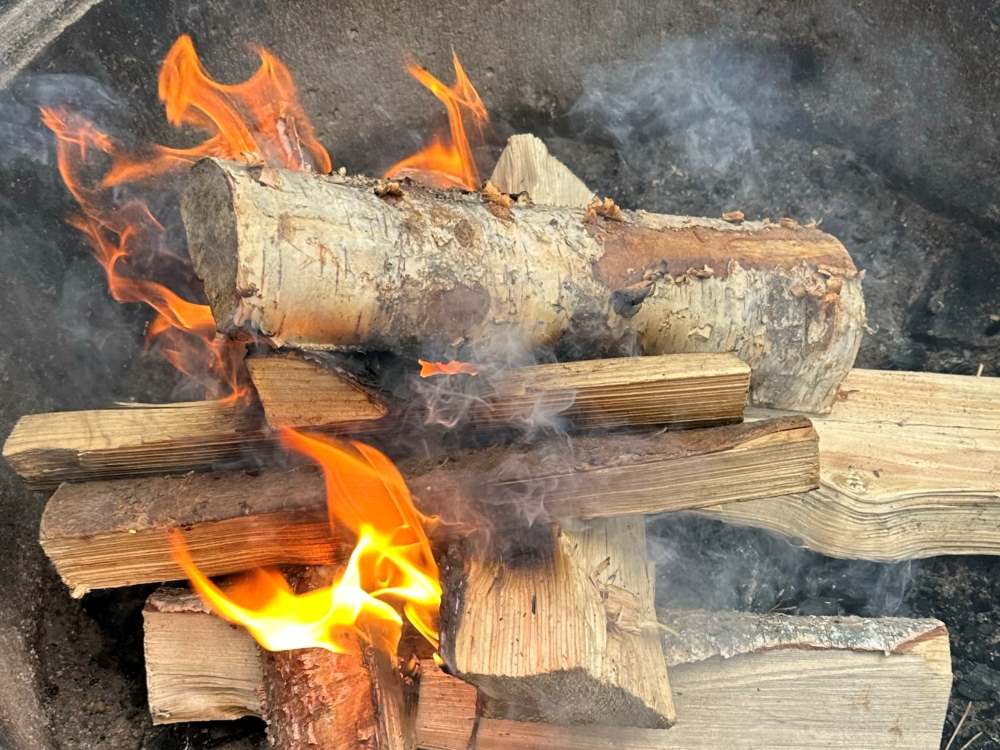
Always check the forest fire warning before making a fire in Finland
The Finnish Meteorological Institute issues forest fire warnings during periods of dry forest conditions. These warnings signify a prohibition on open fires during the specified timeframe. There are three different level of forest fire warnings (yellow, orange and red) and one in grass fire warnings (yellow). Kinda like volcano warnings in Iceland but nothing like that. They all refer in law to the same thing, that it is forbidden to start open fire. Probability for large and quickly progressive forest fires increases when the warning is orange or red.
In the months of April to May, additional warnings concerning the risk of grass fires are issued if required. During this time, the dry grass from the previous year that is exposed under the snow becomes susceptible to ignition. It’s worth noting that in such cases, the fire risk is concentrated on the grass and doesn’t significantly impact the trees. As the active growing season progresses, separate notifications regarding the risk of grass fires are no longer provided.
Most often, the first forest fire warnings of the year are issued in early May. The forest fire warning season ends in September or at the latest in early October. When a forest fire warning is in force, it is forbidden to start an open fire in or near a forest. Check the current warnings in effect at the Finnish Meteorological Institute website.
Different types of fireplaces
The most common type of fireplace to encounter in Finnish nature is a lean-to shelter with an open fireplace or just an open fireplace with few benches around the firepit. These kinds of open fireplaces are exactly the ones you shouldn’t use when the forest fire warning is in effect, no matter how inviting the firepits look.
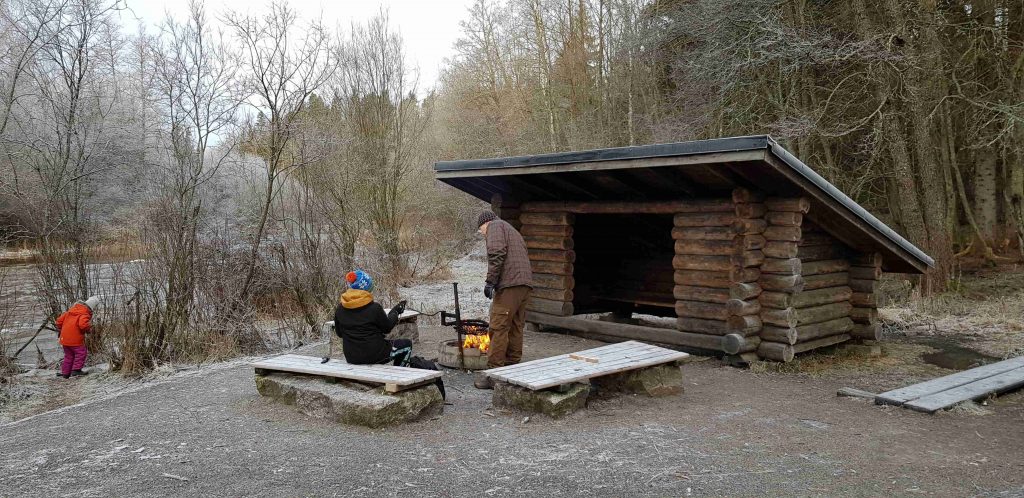
Cooking shelter is a covered fireplace where there is a chimney over the fireplace. These kinds of fireplaces can be used when the forest fire warning is in effect but you must take special care of handling the fire and especially extinguishing the fire after the use.
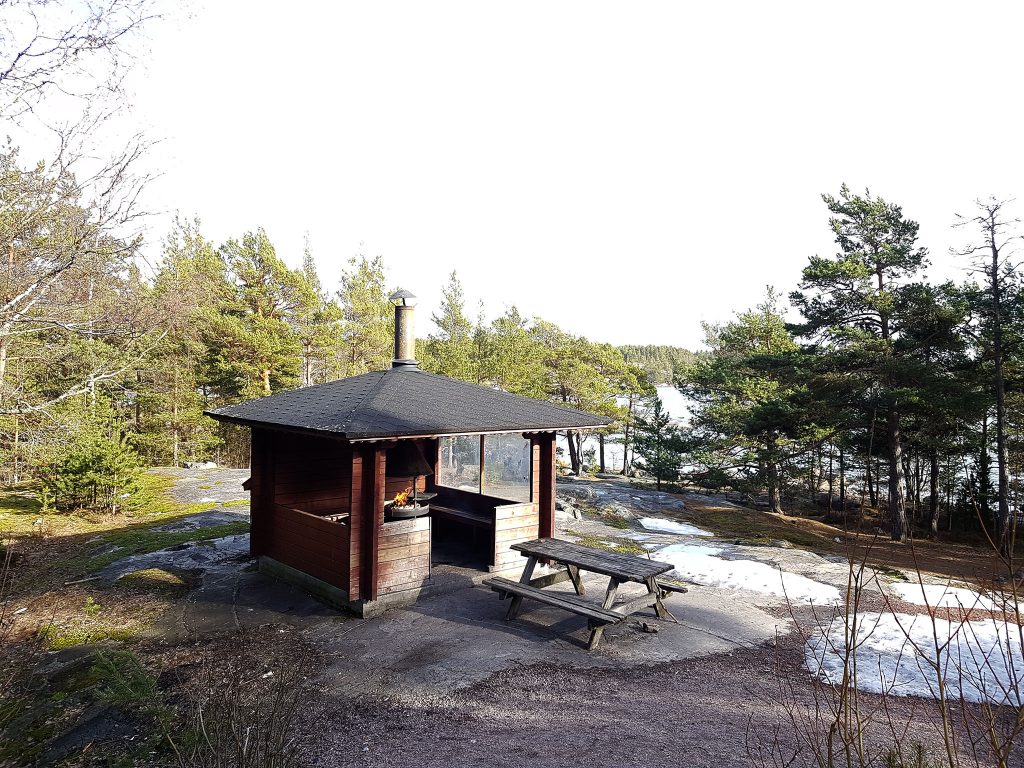
Barbecue huts can also be used by taking special care during the forest fire warning.
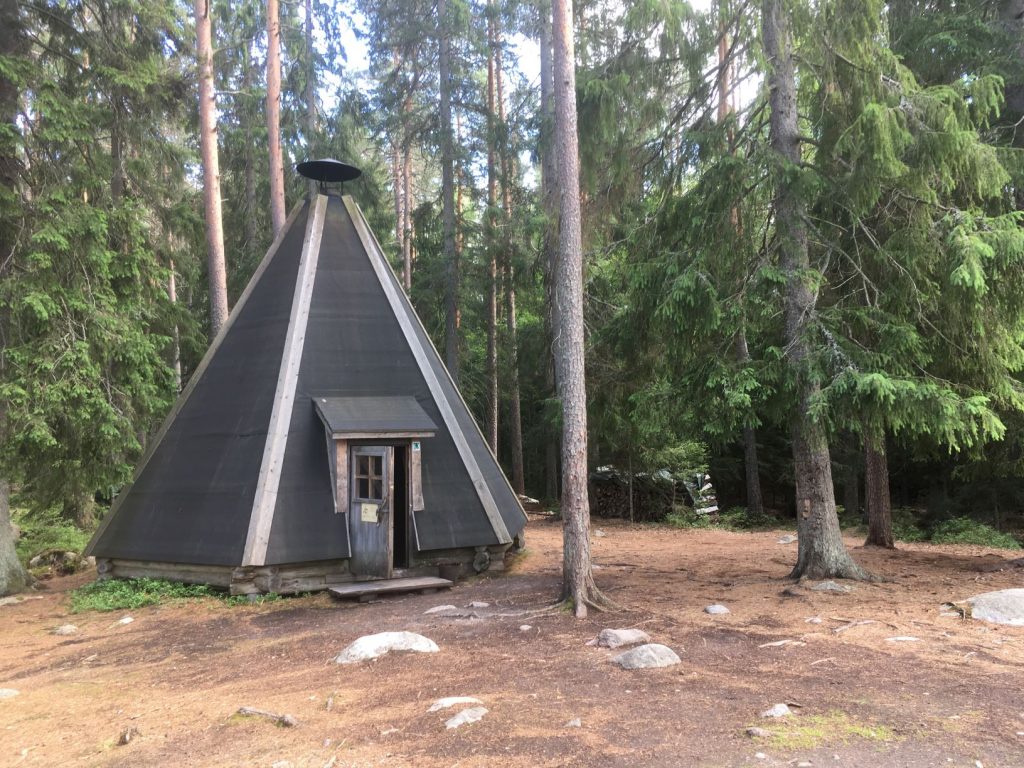
It’s advisable to keep your fire small and manageable. This not only conserves resources but also makes it easier to control the fire and reduces the risk of it getting out of hand. Always extinguish your fire properly when leaving the site.
Here’s a kind reminder of lean-to shelter etiquette, which is also applicable for cooking shelters. In the video below, one of our bloggers, Patrik, shows how to use bush stove for cowboy coffee on his snowshoeing trip to Meiko.
Frequently asked questions about making a fire and forest fire warning in Finland
- You have found a lovely camping spot in a forest by a lake. It is not an official campsite nor any fireplace marked to a map. Are you allowed to make fire by the lake shore when the forest fire warning is not in effect?
No. Generous everyman’s rights don’t allow you to make an open fire wherever without asking permission from the landowner. Even if someone has had a fireplace in that same location earlier and the forest fire warning is not in effect. If it’s not a clearly designated fireplace or marked in the map as one, you always need landowner’s permission. - What should you do if you notice that someone has left fire on in an open fireplace when the forest fire warning is in effect?
You should definitely take immediate action and extinguish the fire. Do not dig a sausage out of your backpack and take advantage of the existing fire, thinking that you were not the idiot who ignited it so it is not your responsibility. Fire safety is your responsibility now since you walked to the fireplace and noticed the fire. - What should you do if encounter someone having an open fire when the forest fire warning is in effect?
It’s important to approach the situation with understanding and respect, as people may not always be aware of the forest fire warning or the potential risks their fire poses. Educate them about the fire safety and kindly ask them to extinguish the fire. However, if they are unwilling to comply and the fire poses a significant threat, involving authorities is a responsible course of action. - Are you allowed to use a bush stove that burns branches when the forest fire warning is in effect?
No, burning branches with a portable stove is considered open fire and should not be used if there is an elevated risk for forest fire. Be like Patrik and use it responsibly. - Are you allowed to use portable gas burner during forest fire warning?
Yes, gas burner can be used. It is therefore the most commonly used method of cooking in trekking. If the forest fire warning is in effect, you should use gas burner with special care. Pay attention to the surface where you place the burner. Rock or sand surface is better than dry grass on the ground. - Are you allowed to use a disposable instant BBQ tray when the forest fire warning is in effect?
No, it is considered an open fire and should not be used. Still no. Leave it home and pack some sandwiches with you. You do not possess the power to command open flames in a universe where the surrounding nature is as arid as can be, eagerly anticipating the slightest spark. - Do you need to bring your own firewood to a designated fireplace?
There is often free firewood available, but use it sparingly. If you are unsure if the fireplace has firewood available, carry your own firewood. - When a fireplace has a small amount of ready-made firewood available and the rest of the wood is stored as big logs and there is a saw or an ax available, can you use the ready-made firewood?
According to the etiquette, you must cut your own firewood. You can cut some extra if you want to leave them for someone who is not able to cut firewood by themselves. - Can you collect firewood freely from a forest?
You are not allowed to collect logs nor cut any trees or take branches or birchbark from living trees. You are allowed collect some dry branches that have fallen to the ground. - Where can you buy firewood?
Most hardware stores sell firewood, and you may also find them from many gas stations and stores like Prisma, Citymarket, Tokmanni, or Rusta. - What is the best kind of wood for campfire?
Dry birch tree burns fast, but it doesn’t produce a lot of sparks that could be dangerous in camping. It is probably the most commonly used wood for campfire in Finland. Pine doesn’t produce as much heat as birch so it is usually cheaper. Pine sparks somewhat, but it is suitable for campfire. Spruce burns fast and sparks a lot, so avoid that. If maple is available, it is the best wood for campfire. It produces plenty of heat and makes excellent embers for cooking. Grey alder is fine as well, it doesn’t produce a lot of heat nor smoke. It is actually the preferred wood for smoke sauna. - Can you leave fire unwatched?
Only if you are Bruce Almighty. Or Morgan Freeman. - Can you burn your trashes at campsite?
According to Metsähallitus, you can burn small amounts of clean paper and cardboard waste that has not been coated with aluminum or plastic. The rest of your waste has to be carried back home and recycled there. You might think that some combustible plastics such as thin food packaging materials or cigarette butts could be burned in a fireplace, but campfire does not produce enough heat to burn the plastic waste cleanly. Plastics and aluminium turn ash into hazardous waste. Would you like to cook your food in a fireplace that is full of hazardous waste? - How do you successfully extinguish a fire on your departure?
Let the fire go out on its own and then use snow or carry water from nearby lake or stream with a plastic bag that you always have in your pocket in case of encountering mushrooms or trash on a nature trail and make sure that the fire is properly out. - Does making a fire always include makkara in Finland?
Yes. Makkara (=sausage) is a popular food item to grill over an open fire, making it a favorite pairing for many Finns during campfire outings.
In case of a fire in a forest
If you encounter a fire or inadvertently start one, follow these steps:
- Stay calm: Assess the situation and remain calm. Panicking can hinder your ability to make rational decisions.
- Call 112: If the fire is beyond your control, immediately contact emergency services and provide them with your location. I highly recommend you to download 112 Suomi app even before heading to a forest. It allows authorities to easily locate you while making the call.
- Attempt to extinguish: If the fire is small and manageable, use water or dirt to extinguish it. Ensure that the fire is completely out before leaving the site.
- Evacuate safely: If the fire spreads rapidly or if authorities instruct you to evacuate, do so promptly and follow their guidance.
